Diamox vs Alternatives: Drug Selector Tool
Select Your Condition
Recommended Treatment Options
Key Takeaways
- Diamox (acetazolamide) works by inhibiting carbonic anhydrase, leading to reduced fluid production in the eye and kidneys.
- Common alternatives include methazolamide, topiramate, dorzolamide, brinzolamide, and hydrochlorothiazide, each with distinct strengths and drawbacks.
- Choice depends on the condition treated (glaucoma, altitude sickness, seizure control, diuresis), patient tolerance, and potential drug interactions.
- Side‑effect profiles vary: Diamox may cause metabolic acidosis, while some alternatives cause taste disturbances or allergic reactions.
- Consult a healthcare professional before switching; dosage adjustments are often needed.
What is Diamox (acetazolamide)?
When you hear the name Diamox, you’re hearing a brand of acetazolamide, a carbonic anhydrase inhibitor. By blocking the enzyme carbonic anhydrase, the drug reduces the formation of bicarbonate in the body, which in turn lowers fluid production in the eye and the kidney. This mechanism makes it useful for conditions that need rapid fluid reduction, such as certain types of glaucoma and acute altitude sickness.
How does Diamox work? (Mechanism of Action)
Carbonic anhydrase catalyzes the conversion of carbon dioxide and water into carbonic acid, which quickly dissociates into bicarbonate and protons. In the eye, this reaction contributes to aqueous humor production. In the kidney, it helps re‑absorb bicarbonate in the proximal tubule. Inhibiting the enzyme does three things:
- Decreases aqueous humor formation → lower intra‑ocular pressure for glaucoma.
- Promotes bicarbonate loss → metabolic acidosis that encourages ventilation, helpful at high altitudes.
- Induces a mild diuretic effect → useful for certain cases of edema.
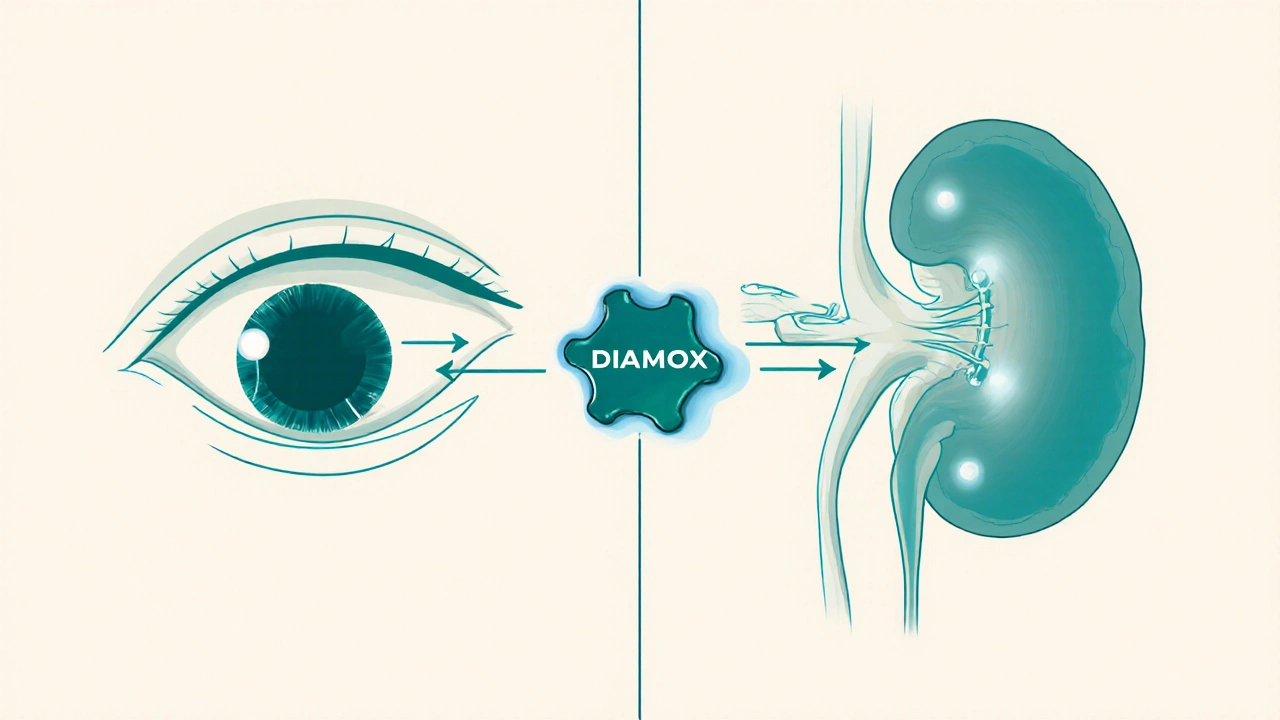
Clinical uses of Diamox
Doctors prescribe Diamox for several distinct reasons:
- Glaucoma - especially acute angle‑closure attacks where pressure must drop quickly.
- Prevention and treatment of altitude sickness - by stimulating breathing and reducing fluid buildup.
- Adjunct therapy in certain seizure disorders, notably epilepsy, where it helps control refractory seizures.
- Management of metabolic alkalosis and some cases of edema when a mild diuretic is preferred.
Alternatives to Diamox
If Diamox isn’t a good fit-maybe due to allergy, intolerable side effects, or specific patient factors-several other drugs can step in. Below is a quick snapshot of the most common alternatives:
- Methazolamide: another carbonic anhydrase inhibitor, taken orally, often used when a longer‑acting option is needed.
- Topiramate: originally an antiepileptic that also inhibits carbonic anhydrase; useful for migraine prophylaxis and some glaucoma cases.
- Dorzolamide: a topical eye drop (often combined with timolol) that directly lowers intra‑ocular pressure with minimal systemic exposure.
- Brinzolamide: another topical carbonic anhydrase inhibitor, similar to dorzolamide but in a different formulation.
- Hydrochlorothiazide: a thiazide diuretic that reduces fluid volume via a different pathway; sometimes combined with carbonic anhydrase inhibitors for stronger pressure control.
Detailed Comparison Table
| Attribute | Diamox (Acetazolamide) | Methazolamide | Topiramate | Dorzolamide (Topical) | Brinzolamide (Topical) |
|---|---|---|---|---|---|
| Formulation | Oral tablet | Oral tablet | Oral tablet | Eye drop | Eye drop |
| Primary indication | Acute glaucoma, altitude sickness | Chronic glaucoma | Epilepsy, migraine prophylaxis | Open‑angle glaucoma | Open‑angle glaucoma |
| Onset of action | 30‑60minutes | 1‑2hours | 2‑4weeks (steady‑state) | Within minutes | Within minutes |
| Typical dose (adult) | 250‑1000mg/day | 50‑200mg/day | 25‑200mg/day | 1‑2 drops per eye daily | 1 drop per eye daily |
| Key side effects | Metabolic acidosis, paresthesia, renal stones | Similar to Diamox, less severe | Weight loss, cognitive fog, kidney stones | Burning, bitter taste, ocular irritation | Blurred vision, taste disturbance |
| Contraindications | Severe liver disease, hypersensitivity, sulfonamide allergy | Sulfonamide allergy, severe renal impairment | Pregnancy (category D), glaucoma | Corneal disease, sulfonamide allergy | Severe ocular inflammation |
Pros and Cons of Each Option
Understanding the trade‑offs helps you talk to your doctor about the best fit.
- Diamox:
- Pros - fast systemic action, works for both eye pressure and altitude sickness.
- Cons - systemic side effects (acidosis, tingling), not ideal for patients with sulfonamide allergy.
- Methazolamide:
- Pros - longer half‑life, lower pill burden.
- Cons - still a sulfonamide, similar metabolic side effects.
- Topiramate:
- Pros - dual benefit for seizures/migraines and mild IOP reduction.
- Cons - weight loss, cognitive dulling; not a first‑line glaucoma drug.
- Dorzolamide (topical):
- Pros - minimal systemic exposure, good for patients who can’t swallow pills.
- Cons - may cause eye irritation; requires strict adherence to dosing schedule.
- Brinzolamide (topical):
- Pros - preservative‑free formulation available, pleasant to use.
- Cons - similar side‑effect profile to dorzolamide; cost can be higher.
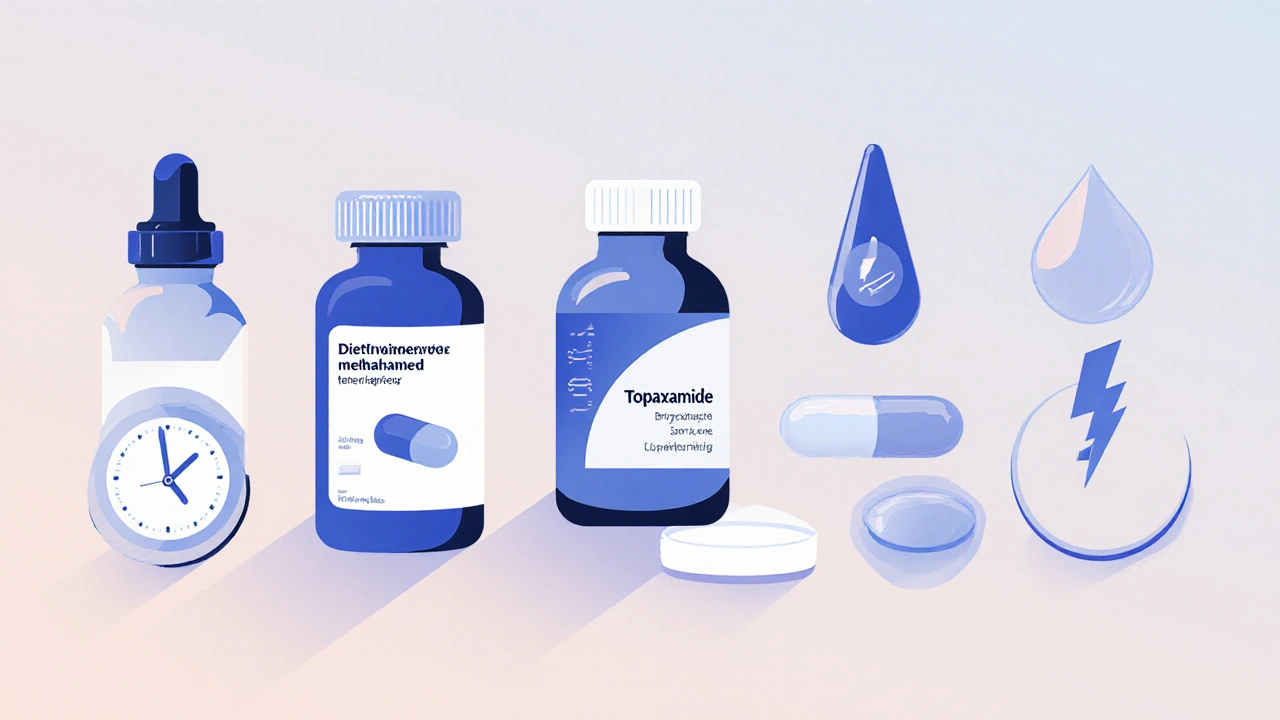
How to Choose the Right Agent for Your Situation
There isn’t a one‑size‑fits‑all answer, but here’s a quick decision guide:
- Urgent pressure drop needed? Go oral - Diamox or Methazolamide. If you can wait a few hours, topical drops may suffice.
- Altitude travel planned? Diamox is the gold standard; if allergic, consider low‑dose topiramate under physician supervision.
- Concern about systemic side effects? Topical dorzolamide or brinzolamide are safest.
- Co‑existing seizure disorder? Topiramate might kill two birds with one stone, but discuss dosing carefully.
- Kidney disease or sulfonamide allergy? Avoid Diamox and Methazolamide; consider topical agents or non‑CAI diuretics like hydrochlorothiazide.
Always pair these heuristics with a thorough medical history and lab work (renal function, serum bicarbonate, liver enzymes). Adjustments in dosage often prevent unwanted metabolic swings.
Potential Pitfalls and How to Avoid Them
Switching between carbonic anhydrase inhibitors can be tricky. Common mistakes include:
- Stopping Diamox abruptly and experiencing rebound intra‑ocular pressure.
- Doubling doses when side effects appear, thinking “more will fix it.”
- Neglecting to monitor blood gases in patients on high‑dose regimens - metabolic acidosis can become severe.
- Overlooking drug interactions: both Diamox and topiramate increase the effect of renal excretion of certain antibiotics and increase risk of kidney stones.
Work with a healthcare professional to taper doses and schedule follow‑up labs. A simple urine pH test can flag emerging acidosis early.
Frequently Asked Questions
Can I use Diamox for chronic glaucoma?
Diamox is excellent for rapid pressure reduction but isn’t ideal for long‑term maintenance because of systemic side effects. Doctors often transition patients to topical agents like dorzolamide or brinzolamide for chronic control.
Is Methazolamide safer than Diamox?
Methazolamide has a longer half‑life, so dosing is easier, but it shares the same sulfonamide core, so allergy risk is similar. Some patients report fewer tingling sensations, but overall safety profiles are comparable.
What should I monitor while taking Diamox?
Key labs include serum bicarbonate, electrolytes (especially potassium), renal function (creatinine), and urine pH. Watch for persistent nausea, muscle cramps, or excessive fatigue - signs of worsening acidosis.
Can I combine Diamox with other glaucoma drops?
Yes, it’s common to pair an oral CAI with a beta‑blocker or prostaglandin analog for additive pressure lowering. However, avoid combining two oral carbonic anhydrase inhibitors unless specifically directed, as this raises acidosis risk.
Is Diamox safe for pregnant women?
It falls under FDA pregnancy category C - meaning risk cannot be ruled out. Doctors usually reserve it for situations where benefits outweigh potential risks, such as severe altitude sickness in a pregnant traveler.
Bottom line
Diamox is a versatile, fast‑acting carbonic anhydrase inhibitor that shines in emergency eye‑pressure drops and altitude emergencies. Its alternatives-methazolamide, topiramate, dorzolamide, brinzolamide, and even hydrochlorothiazide-fill the gaps where systemic side effects, dosing convenience, or specific comorbidities matter. The best choice hinges on the condition you’re treating, how your body tolerates the drug, and what other medications you’re already taking. Always bring these factors to your doctor’s attention before starting or switching therapy.


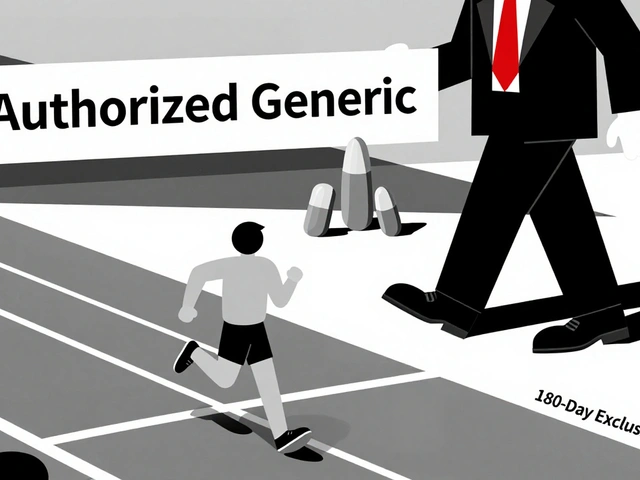

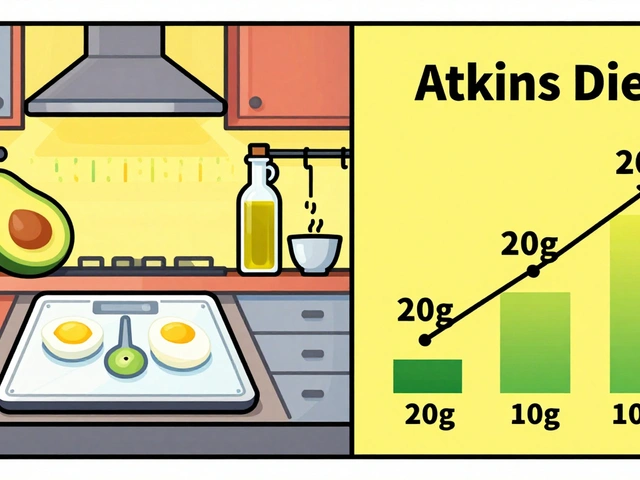

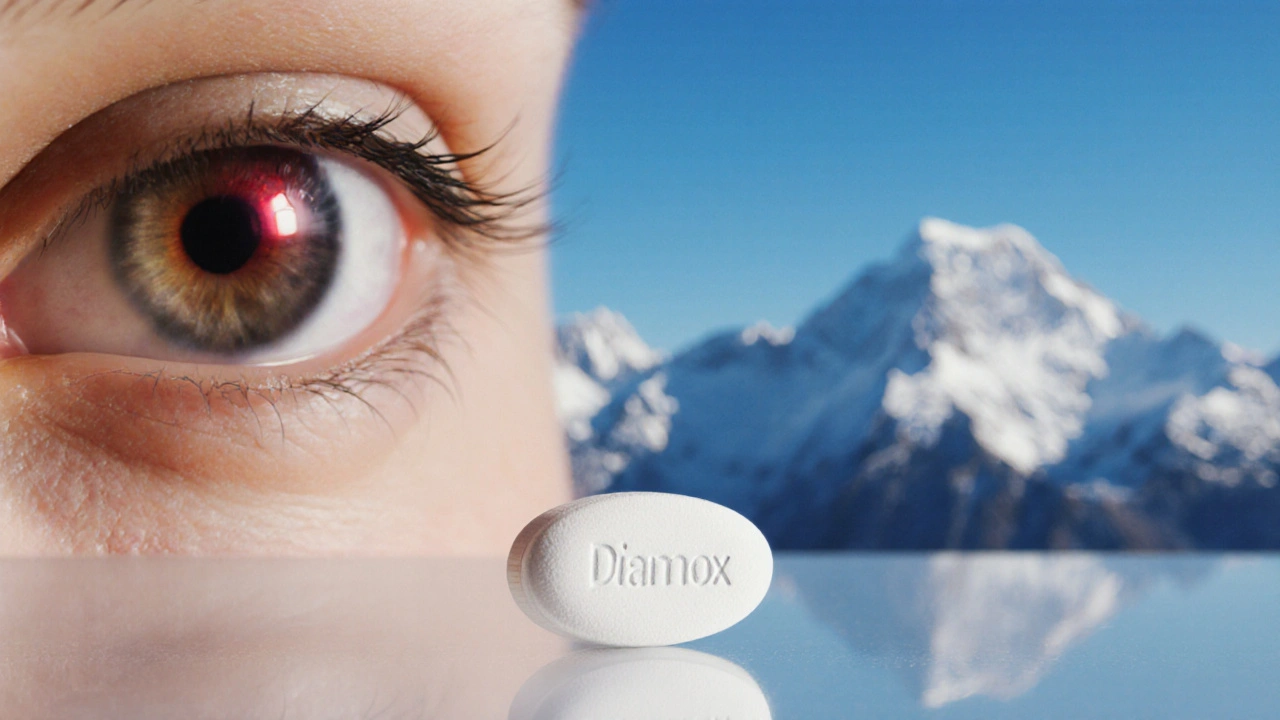
Write a comment